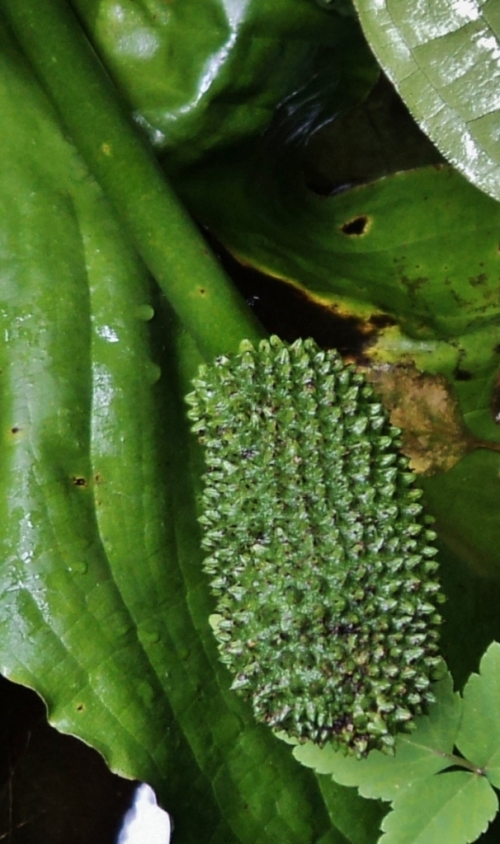Perennial. Zone 3. Araceae. Western North America; California north to Alaska; throughout British Columbia from coastal regions to lower elevations of mountain ranges.
This spectacular native wildflower emerges from its winter hibernation before the snow is completely gone, appearing in wet and swampy areas in April and early May. Tight-packed green flower spikes are enclosed in a large, bright yellow bract. Pollinated by flies and beetles, which are attracted by the musky fragrance of the flowers. Club-shaped seed pods mature in late summer.
Foliage is strongly pungent when bruised, hence the common name. Massive, glossy, fleshy fleaves are 3 to 4 ft. tall.
Excellent for those with larger gardens, and adds early spring interest to the bog garden and pond edge. Prefers shade. A moisture lover, which demands wet feet to be happy. Fairly slow growing, but long-lived and maintenance free where happy.
Yellow Skunk Cabbage may be found in our in the wild in our area in wetter regions, generally where cedars thrive. Look for it in the bush around Likely and Horsefly, and in lower elevation wet areas in the Cariboo Mountains. Abundant in Wells Grey Park.
From Lewis J. Clark’s superb 1973 masterwork Wild Flowers of British Columbia:
The whole plant has a smell of spring, of surging growth, that would be objectionable in a closed room but is not unpleasant in its own habitat. For the record, it does not smell at all like the mephitic spray of the skunk. Bears consume the whole plant, including the short thick rootstock, while deer occasionally browse the leaves.
This huge plant is related to the taro, staple food of the Polynesians. Both plants produce a stinging sensation in the mouth, due to calcium oxalate. Ages ago, however, the natives in our area discovered, as did those of the South Seas, that roasting and drying the root drove off the substance responsible for the stinging, burning taste, after which it could be ground to an edible flour.
Fraser’s Thimble Farms on Saltspring Island is the only commercial source that I am aware of, but you may be able to acquire this by special order through local nurseries such as Richbar in Quesnel.
Lysichiton americanus has received the Royal Horticultural Society’s Award of Garden Merit.





